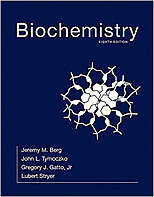
Biochemistry
Berg, Jeremy M.; Tymoczko, John L.; Gatto, Jr., Gregory J.; Stryer, Lubert
8 ed.
New York: W.H. Freeman and Company, 2015
 |
Biochemistry Berg, Jeremy M.; Tymoczko, John L.; Gatto, Jr., Gregory J.; Stryer, Lubert 8 ed. New York: W.H. Freeman and Company, 2015 |
51 termes
| TALEN n. (transcription activator-like effector nuclease) |
|
| tandem mass spectroscopy n. |
|
| TAP protein n. |
|
| target compartment n. |
|
| tastant n. |
|
| taste bud n. |
|
| T-DNA n. (transferred DNA) |
|
| template-directed enzyme n. |
|
| template-recognition site n. |
|
| Tetrahymena [nom cientÝfic] |
|
| tetraubiquitin n. |
|
| TF n. (tissue factor) |
|
| thermodynamically favorable reaction n. |
|
| thermodynamically unfavorable reaction n. |
|
| thiazolidine ring n. |
|
| thioesterase n. |
|
| thiopurine methyltransferase n. |
|
| threshold effect n. |
|
| thromboxane synthase n. |
|
| thymidine phosphorylase n. |
|
| time-of-flight mass analyzer n. (TOF mass analyzer) |
|
| TLR n. (Toll-like receptor) |
|
| TMA n. (trimethylamine) |
|
| TMAO n. (trimethylamine-N-oxide) |
|
| TMP n. (thymidine monophosphate) |
|
| TOF mass analyzer n. (time-of-flight mass analyzer) |
|
| tosyl-L-phenylalanine chloromethyl ketone n. (TPCK) |
|
| total entropy n. |
|
| toxic derivative n. |
|
| toxoid vaccine n. |
|
| trans configuration n. |
|
| transaldolase reaction n. |
|
| transcribed region n. |
|
| transcription activator-like effector nuclease n. (TALEN) |
|
| transcriptional repressor n. |
|
| transferred DNA n. (T-DNA) |
|
| transferrin-receptor mRNA n. |
|
| transgenic mouse n. |
|
| translesion n. |
|
| transmembrane helix n. |
|
| transmissible spongiform encephalopathy n. |
|
| trimethylamine n. (TMA) |
|
| trimethylamine-N-oxide n. (TMAO) |
|
| triple helix n. |
|
| tRNA-binding site n. |
|
| t-SNARE n. |
|
| T-to-R equilibrium n. |
|
| T-to-R transition n. |
|
| twofold rotational symmetry n. |
|
| tyrosine phosphatase IB n. |
|
| tyrosyl-tRNA synthetase n. |
|